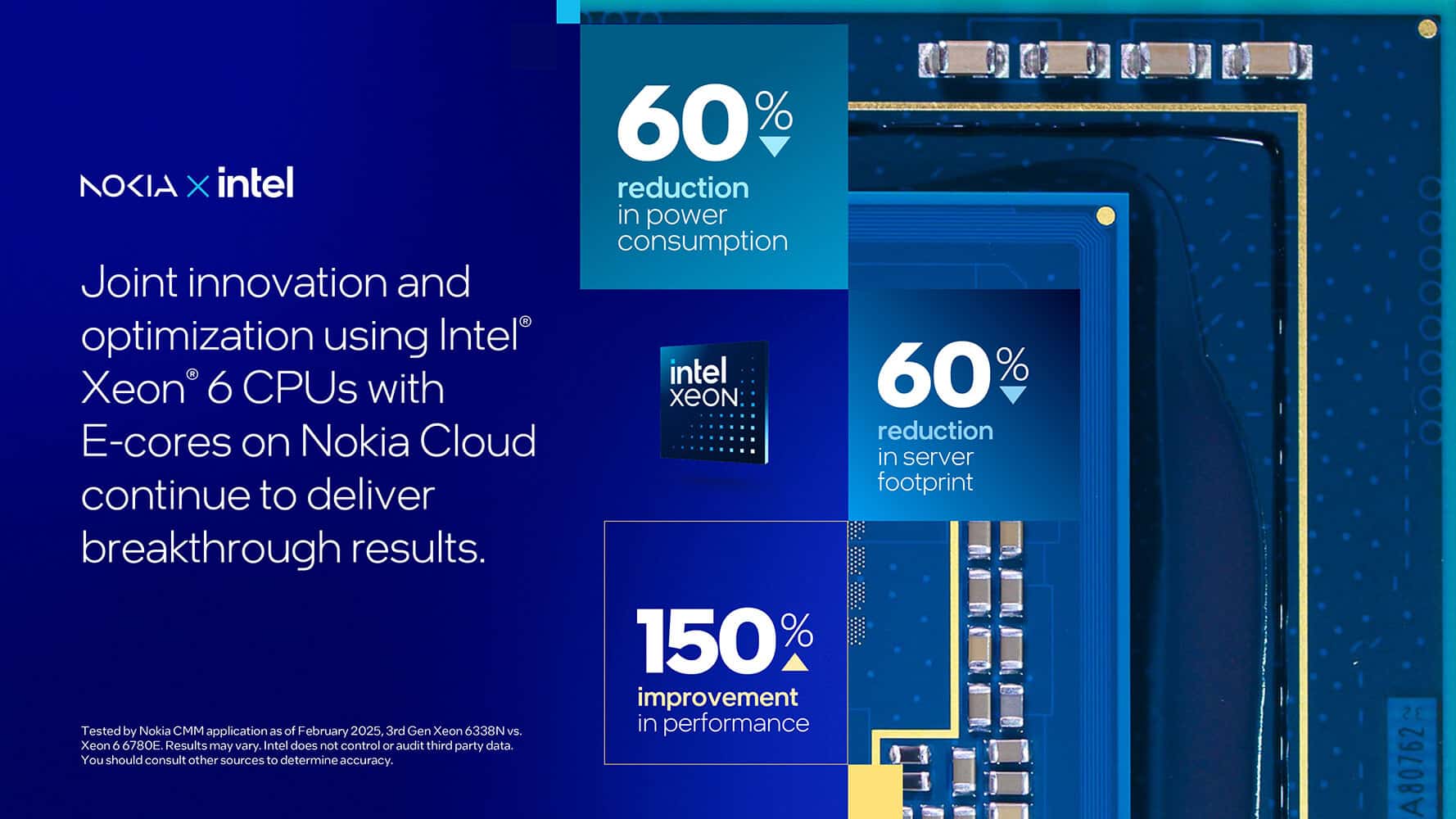Sure! Here’s the translation:
—
A strategic alliance will allow for up to 60% less energy consumption and 150% more performance in mobile operators’ core networks.
At a time when energy efficiency and sustainability are at the forefront of the global technology agenda, Intel and Nokia have announced a significant advancement in the transformation of core networks for telecommunications. Thanks to the integration of the new Intel Xeon 6 processors with efficient cores (E-cores) into Nokia NFVI v5.0 and Nokia Core Networks Applications, industry customers will see remarkable improvements: up to 60% reduction in energy consumption, 60% less space occupied in servers, and 150% increase in performance compared to previous generations of widely deployed servers.
More efficiency without sacrificing performance
As explained by Alexander Quach, Vice President of Intel and General Manager of the Core and Wired Networking division, “The combination of Intel Xeon 6 processors with E-cores, specifically designed for high-density computing with low power consumption, along with the Intel Infrastructure Power Manager (IPM) software, provides a strong foundation for building much more sustainable 5G networks.”
These new processors enable load-aware computing and energy consumption management, lowering operational costs and reducing carbon footprint without compromising service stability. This promise is particularly appealing to telecommunications operators facing exponential growth in data traffic and increasing sustainability demands.
Nokia and Intel: Decades of joint innovation
This is not the first time these two companies have collaborated. The partnership between Nokia and Intel goes back decades and has been marked by technological milestones that have helped redefine mobile network infrastructure. This time, the focus is on sustainability, a key axis for operators looking to modernize their networks without multiplying their energy costs.
Kal De, Senior Vice President of Products and Engineering in Nokia’s Cloud and Network Services division, emphasized the importance of these advancements: “The results from our joint testing with IPM using Xeon 6 clearly show how industrial alliances, like ours with Intel, are crucial for driving innovation and building more efficient and sustainable networks. These energy savings are exactly what operators need today.”
Roadmap: Availability by late 2025
Nokia has already conducted successful IPM tests with various cloud service providers, demonstrating that these energy improvements are applicable even to previous generations of servers. The Intel Xeon 6 (model 6780E) platform, along with the upcoming version of the energy management software (IPM), will be compatible with the future Nokia Packet Core v25.7 application, which is expected to be available by late 2025.
Key points of the Intel-Nokia agreement
- 60% less energy consumption in core network servers.
- 60% smaller physical footprint in data centers.
- 150% more performance for 5G workloads.
- Compatibility with future versions of Nokia Packet Core.
- Solution aligned with the sustainability goals of operators.
This new step between Intel and Nokia not only enhances technical efficiency but also reinforces a clear message: the energy transformation of 5G networks is already underway. Those who lead this transition will not only reduce costs but will set the standard for sustainability in future telecommunications.
Source: techpowerup
—

